Fox breeding cycle and fox family life
(1) Foxes - mating and the birth of the cubs
Foxes mate from December to February and announce the process with loud, far-carrying vocalisations typified by a barking ‘wow-wow-wow’ and an eerie, high-pitched ‘waaaaaaaa’.
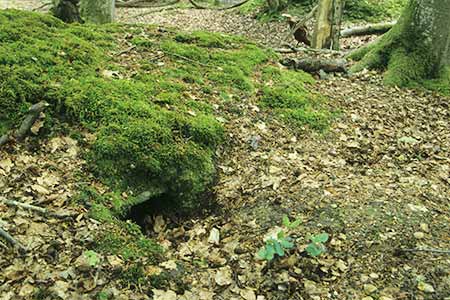
In the countryside, underground breeding dens in hedgerows, woodland, on sloping open ground, or at woodland edges, for example, may be excavated in preparation for the birth of the cubs, although many foxes often seem to take the easy option and commandeer and enlarge part of a rabbit warren or, perhaps surprisingly, cohabit with badgers in a woodland sett – the badgers live at one end of the sett, the foxes at the other, with rabbits sometimes in-between, almost acting as a ready-made larder.
(Foxes mainly live above ground outside the breeding season - often lying up during the day in dense vegetation, under tree roots and in other places that offer shelter and concealment; or when undisturbed, cheekily sunning themselves out in the open - although harsh weather at any time of year might temporarily drive them underground).
There's more about foxes' dens here - Foxes dens, including the differences between a foxes' den, a badgers' sett and a rabbit burrow.
Fox gestation period is around 52 days, births are usually in March or April, and the typical litter size is 4 or 5 cubs, although litters of 6, or sometimes more, are not uncommon.
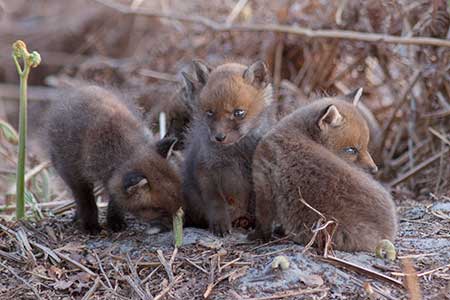
Fox cubs at birth are blind and deaf, their nose is relatively short, their ears are small and floppy, and their fur is short and very dark. The vixen's body heat is needed by the cubs for the first 2 to 3 weeks of life - during this period, she is provisioned by the male: he leaves food by the den entrance for her and often continues to bring back food for the cubs after they are weaned.
(2) Foxes and badgers - uncomfortable bed-fellows
Foxes and badgers living in the same sett will usually maintain a polite distance, but in the event of aggression, it's likely that the badger will triumph. Both fox and badger, though, often show the utmost respect for one another.
If subject to unacceptable levels of disturbance, however, including by badgers, foxes will move their cubs, particularly very young ones, to another nearby den.
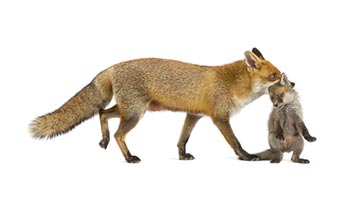
I've also at dusk watched a fox emerge from one part of a badgers' sett, scent-mark around the entrances, and then go off to hunt. Minutes later, a badger emerged from a nearby sett entrance, diligently sniffed the air, and then rapidly moved its cubs, one at a time, picked up by the scruff of the neck, to another part of the sett.
Check out this video which includes a sequence showing a vixen picking up a cub and carrying it back to the den - Fox carrying a cub.
And this series of videos show interaction between foxes and badgers - Foxes and badgers.
(3) Fox cubs - first emergence from the den
After around 4 weeks, the cubs start to venture above ground, hesitantly initially. By this time, their coat is darkish brown, often with a reddy tinge to the face; their ears are a little more like those of adults - longer and more erect; and their muzzle has lengthened and will continue to do so as full adult facial features are progressively developed over the next 4 - 6 weeks.
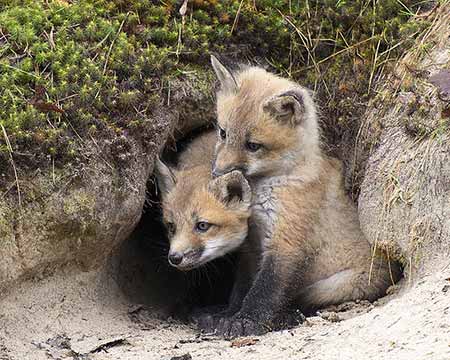
(Photo 186130162 / Fox Cubs © Rejean Bedard | Dreamstime.com)
Adult coat colour is also fully assumed over this period, starting, at least in some animals, at the front and working backwards.
Following first emergence, hunting and foraging instincts quickly kick in as the cubs seek out earthworms and insects to supplement a mixture of 'mother's milk' and solid food brought back for them by both the dog fox and vixen. Relatively large mammals, such as rabbits and birds, are often provided for the cubs, whilst for themselves at this time, the adults apparently favour smaller prey items, such as mice and voles.
Returning fox parents are usually greeted with a great deal of excitement by the hungry cubs. In fact, it is probably more accurate to say that a chaotic melee ensues.
When not fully weaned, some of the fox cubs may immediately suckle the returning vixen, whilst whatever prey item has been brought back will be quickly taken and carried away by other, maybe more developed, youngsters, often after a spirited tug-of-war between competing siblings.
Those that miss out on the solid food and are unable, or not inclined, to suckle may simply, agitatedly nuzzle the adult's mouth and throat, and maybe whine, to encourage regurgitation of partly digested food and maybe spur on a speedy resumption of hunting.
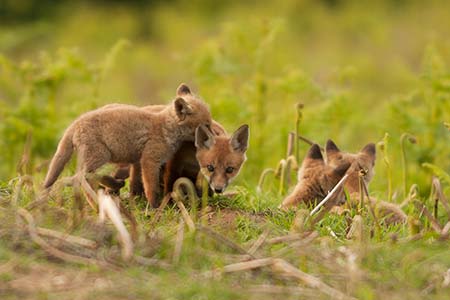
Cubs are suckled for around 4 weeks and progressively weaned thereafter. Some are fully weaned by around 6 - 7 weeks of age, whilst others may still be suckling well beyond this stage.
Certainly not all cubs necessarily develop at the same rate, for within a litter may be very well-grown, well-fed, dominant youngsters - almost miniature adults in appearance - that by virtue of their strength, regularly succeed when competing for food with siblings; alongside other smaller, less developed, subordinate cubs that still retain their 'baby face' features. Indeed, right from birth, fox cubs - like many other wild creatures - are in a battle for life where only the fittest survive.
'Play' fights are a regular occurrence and, again, dominant cubs usually exert their authority, sometimes cruelly picking on weaker siblings.
(4) Fox cubs - survival of the fittest and eventual dispersal
Almost inevitably, some cubs do not survive, and it has even been said that in the first weeks of life, as many as 20% die underground, often as a result of squabbles with siblings, their tiny, lifeless bodies consumed by surviving brothers and sisters. Maybe the unfortunates were inherently weak - the runts of the litter - and destined for a short life; or maybe they were simply unlucky, always at the end of the queue when trying to suckle.
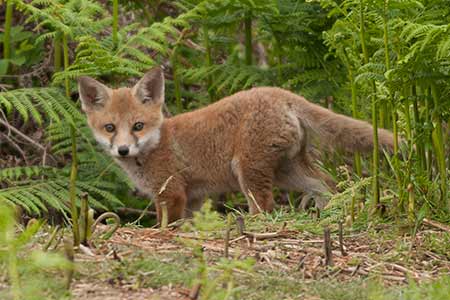
In the weeks immediately after first emergence, the cubs that have survived the early traumas of life tend to stay close to the den, but as confidence grows they progressively wander farther afield, spurred on in part by curiosity, in part by growing mobility and in part by the natural urge for independence.
Research suggests that cubs often abandon the den in June and lie up during the day in undergrowth, whilst by mid-July they are usually of similar appearance to the adults, although often with a tendency towards a more long-legged, lanky look. They then increasingly follow their parents on hunting expeditions and start to forage for themselves.
All, or at least most, males disperse from late-September through to mid-winter, whilst the proportion of dispersing females is considerably lower and probably, at least in part, reflects the mortality rate amongst the established population. Dispersal distances of 250 km have been recorded but these are almost certainly exceptional, at least in the UK - in rural mid-Wales, for example, research showed that males moved an average of 14 km and females 6.5 km.
By early autumn, when around 6 - 7 months old, after their winter coat has replaced that of summer, the cubs are largely indistinguishable from adults.
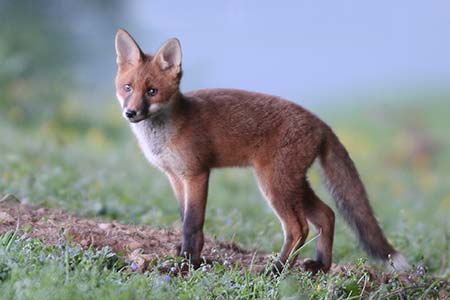
The image above was taken at the end of May, close to an active foxes' den. The animal is relatively long-legged, a characteristic most often associated with juveniles, but young of the year by this time would not normally be so well-grown. It is more likely, then, that it is actually a very thin, gangly young adult, a first time breeder that has been too busy feeding its cubs rather than itself.
Find out lots more about foxes
References:
Collins Field Guide to the Mammals of Britain and Europe: David Macdonald and Priscilla Barrett
Town fox, Country fox: Brian Vesey-Fitzgerald
Animals Tracks, Trails and Signs: RW Brown, MJ Lawrence, J Pope
Collins Guide to Animal Tracks and Signs: Preben Bang and Preben Dahlstrom
Fauna Britannica: Stefan Buczacki
Running with the Fox: David Macdonald
Fox: Martin Wallen
Wild Fox: Roger Burrows
The Diary of Colonel Peter Hawker
Thirty-five Years in the New Forest: Gerald Lascelles
BBC Wildlife on-line edition
Game and Wildlife Conservation Trust
Wildlife online - fox infanticide
Quick links
More links
Search this site

